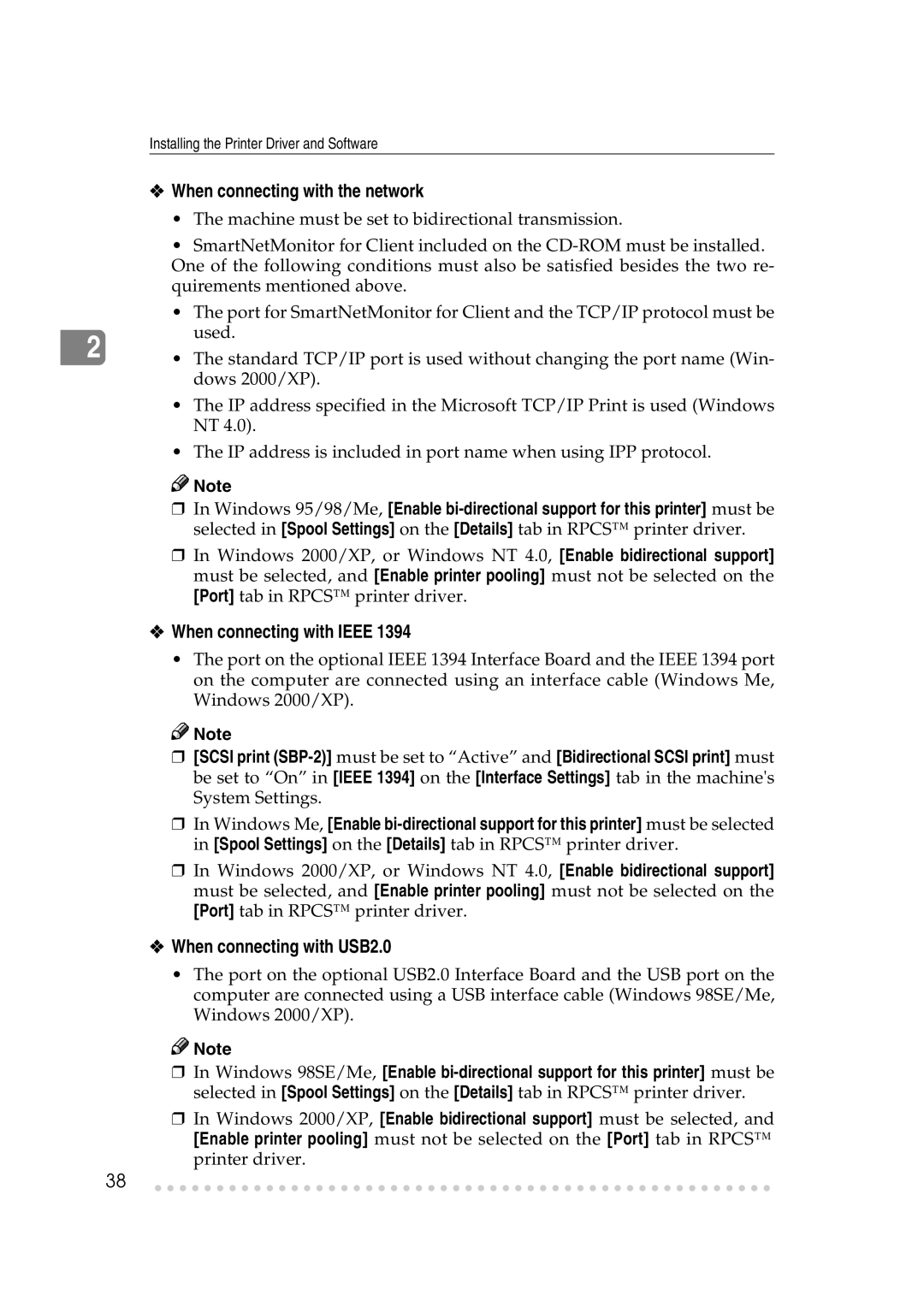
Installing the Printer Driver and Software
❖ When connecting with the network
| • The machine must be set to bidirectional transmission. | |
| • SmartNetMonitor for Client included on the | |
| One of the following conditions must also be satisfied besides the two re- | |
| quirements mentioned above. | |
| • The port for SmartNetMonitor for Client and the TCP/IP protocol must be | |
| used. | |
2 | ||
• The standard TCP/IP port is used without changing the port name (Win- | ||
|
dows 2000/XP).
• The IP address specified in the Microsoft TCP/IP Print is used (Windows NT 4.0).
• The IP address is included in port name when using IPP protocol.
![]()
![]() Note
Note
❒In Windows 95/98/Me, [Enable
❒In Windows 2000/XP, or Windows NT 4.0, [Enable bidirectional support] must be selected, and [Enable printer pooling] must not be selected on the [Port] tab in RPCS™ printer driver.
❖When connecting with IEEE 1394
• The port on the optional IEEE 1394 Interface Board and the IEEE 1394 port on the computer are connected using an interface cable (Windows Me, Windows 2000/XP).
![]()
![]() Note
Note
❒[SCSI print
❒In Windows Me, [Enable
❒In Windows 2000/XP, or Windows must be selected, and [Enable printer [Port] tab in RPCS™ printer driver.
NT 4.0, [Enable bidirectional support] pooling] must not be selected on the
❖When connecting with USB2.0
•The port on the optional USB2.0 Interface Board and the USB port on the computer are connected using a USB interface cable (Windows 98SE/Me, Windows 2000/XP).
![]()
![]() Note
Note
❒In Windows 98SE/Me, [Enable
❒In Windows 2000/XP, [Enable bidirectional support] must be selected, and [Enable printer pooling] must not be selected on the [Port] tab in RPCS™ printer driver.
38
